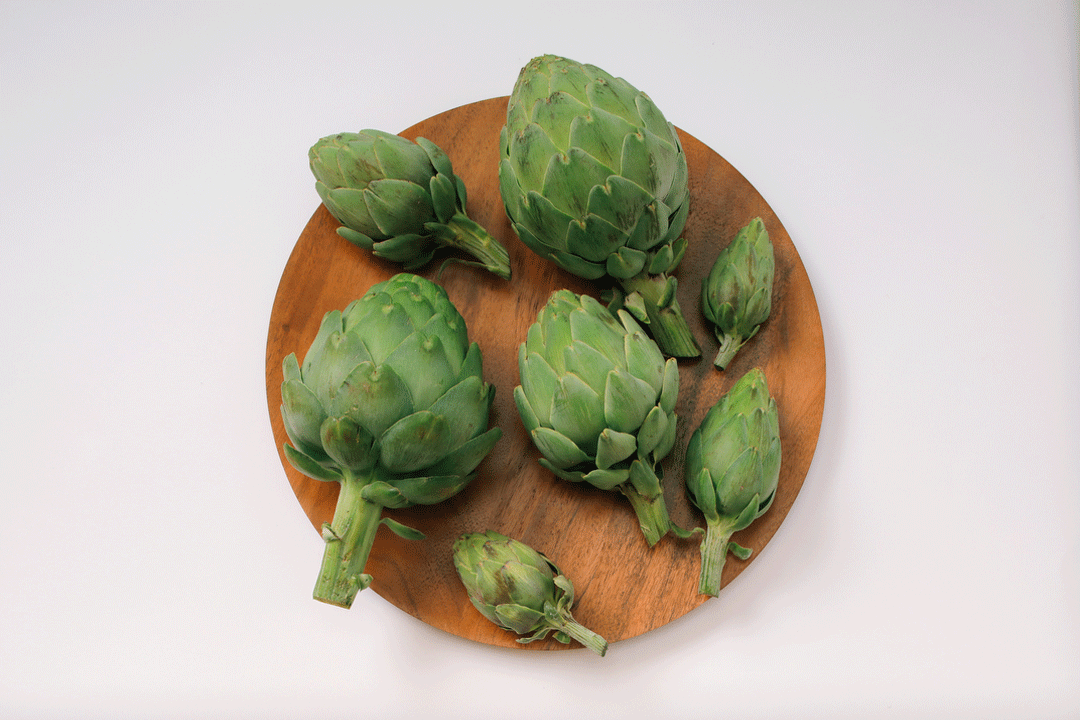New Variety of Artichoke Causes Prickly Situation
- Share via
SAN FRANCISCO — A war of sorts is being waged on a most unlikely battlefield: the artichoke patch.
For decades, California artichoke growers have struggled to teach an often perplexed public how to prepare, peel and eat the prickly vegetable with pointed leaves.
Then they had to persuade the microwave generation that the buttery-tasting “meat” at the tip of the leaf was worth the time and trouble.
Consumers won over to the taste are most familiar with the Green Globe variety, which flourishes near the farming community of Castroville and peaks in late winter and early spring.
Now enters Big Heart, a thornless, slightly purple artichoke grown from seed on 900 acres of a reservation leased from a collective of four tribes along the Colorado River near Parker, Ariz., and at Lompoc, along the California coast 160 miles south of Castroville.
“I guess you’ve heard about the ‘artichoke wars,’ ” said Patty Boman of the California Artichoke Advisory Board.
First marketed about three years ago, the new variety appears to be catching on and stirring up competition in the normally serene artichoke business.
Big Heart grower Steve Jordan of Lompoc notes that growers in the Castroville area, about 100 miles south of San Francisco, “aren’t very happy about us.”
And no wonder. Castroville has billed itself for three decades as the “Artichoke Capital of the World,” paying annual homage to the Green Globe with a festival featuring mouth-watering marinated, steamed, fried and otherwise cooked artichokes.
Last year, more than 50,000 people made the pilgrimage to sample the Monterey County produce that accounts for about 74% of California’s $29-million-a-year artichoke business.
Jordan said the new artichoke seed was developed by his brother, Rusty, and allows planting any time. That increases crop density fourfold and reduces disease, in part because the plants are dug up every six or seven months and replaced to limit the opportunity for insects to cause damage.
The Globe artichoke is grown from crown plantings and lives three to four years. Its natural tendency is to produce during April.
Jordan said an advantage of growing by seed is programming harvest times and growing outside the traditional cooler climes preferred by the Green Globe.
Supermarket chains such as Safeway and Vons are taking advantage of the new choke. At Berkeley Bowl, an independent market known for its premium quality fruits and vegetables, produce manager Dan Kataoka said it has been a big success.
“It sold very well. It’s a meatier, sweeter artichoke,” said Kataoka, adding that it sells for about the same price as the Globe.
“They don’t have the problems with growing that Globe artichokes have. . . . It is competitive with the Globe artichoke because they can grow them cheaper than the Globe artichoke can be grown,” said Boman of the advisory board.
Pat Hopper of Castroville Artichoke People, a growers’ and shippers’ marketing group that promotes the Globe, said there is concern that the new artichoke will bring down prices, which during non-peak months can climb as high as $2 each.
“I think we all want artichokes to be out there at the very best prices,” she said, adding that the Artichoke People want to influence mainly trade groups rather than consumers.
“We really don’t have a strategy,” Hopper said. “We’re not at war. We’re just waiting; we want to see how well the purple is accepted.”
Joe Principe of the U.S. Department of Agriculture is a little amused at all the artichoke uproar. He spent the past 20 years unofficially researching new varieties of artichokes that could be grown successfully from seed.
It was some of Principe’s work that Rusty Jordan used to develop the purple artichoke. Principe said there are a handful of growers in the Imperial Valley area who are experimenting with seed artichokes and predicted traditional growers will be forced to switch.
“They kind of would like to have a monopoly,” he said. “You really can’t blame them, but it’s kind of greedy.”
Tom Zind, spokesman for the Packer weekly trade paper, says the artichoke’s popularity is increasing as the national diet shifts to more fresh vegetables and fruits, but it is “nowhere near a staple item yet.”
Hopper said many people remain confused about how to cook and eat an artichoke. Some scrape the meat from the leaf, then quit before reaching the inside heart, “leaving the best part behind,” she said.
“There are people I have actually seen . . . pop a leaf in their mouth and, being very suave, try to chew it. They won’t eat another one if you don’t correct it very quickly,” Hopper said.





